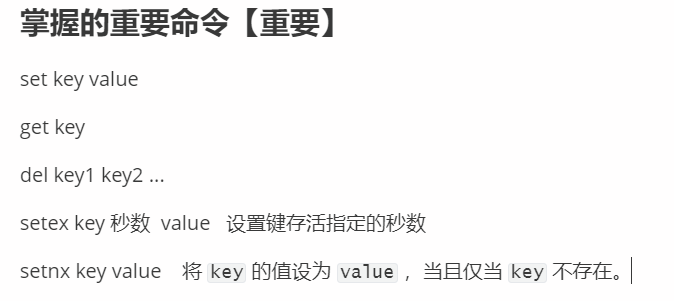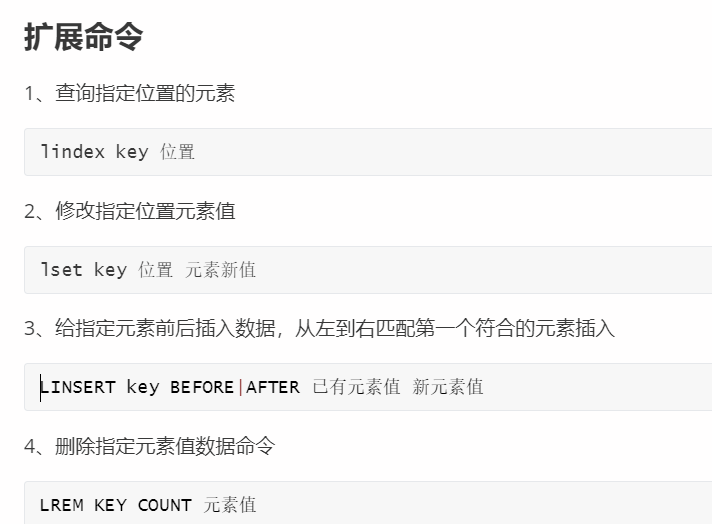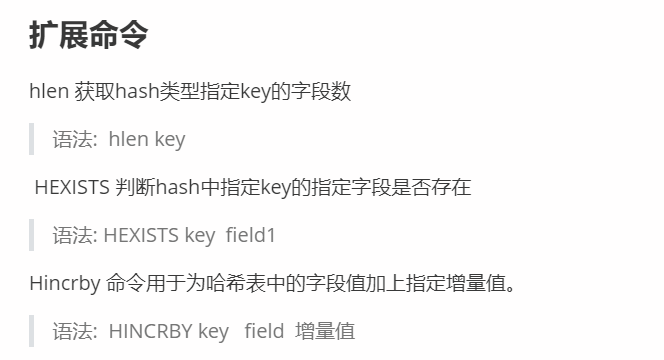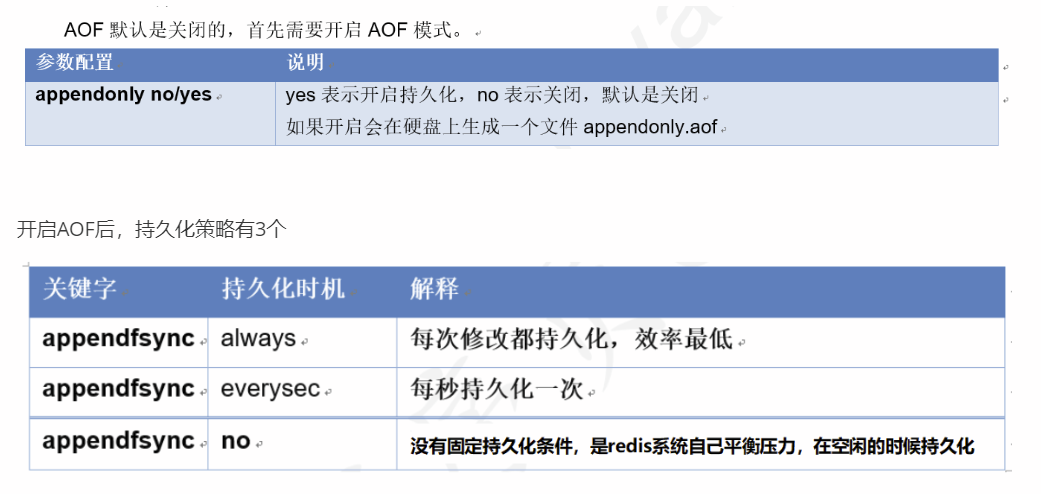NOSQL
NOSQL(Not Only Sql) is not only sql, but also refers to non relational database
There is a very important type of database in non relational database: cache database
Function: deal with data processing problems based on massive users and massive data.
Relational database
advantage:
It is a disk database, and the data is permanently stored on the disk, so the data is safe
Disadvantages:
Slow
Reason 1: the continuous writing of disk database is the reading and writing of IO
Reason 2: relational database has various logical controls such as constraints, checks and transaction operations
Non relational database
advantage
Fast, because it's a memory operation
shortcoming
If the data is unsafe, it is easy to lose some data

For massive access, first access NOsql. There are no numbers in NOsql. The data that will access mysql will be written into NOsql, and all accesses will access the data in NOsql
Five common data types of Redis

1,String


2,List





3,set

4,zset


5,hash


redis persistence mode
1. RDB policy
Redis DataBase(RDB) is the default persistence policy of redis When the persistence conditions are met, all the data in the memory at this time will be persisted to the disk file dump RDB is also called snapshot strategy because it can persist all memory data at a certain time

RDB default rule:
If more than one key is changed (addition, deletion and modification), the data will be persisted to dump once every 900 seconds (15 minutes) RDB file
If more than 10 key s are changed (addition, deletion and modification), the data will be persisted to dump once every 300 seconds (5 minutes) RDB file
If more than 10000 key s are changed (added, deleted or modified), the data will be persisted to dump once every 60 seconds (1 minute) RDB file
Advantages of rdb strategy
The persistence frequency is low, so the cache performance of redis will not be affected
Disadvantages of rdb strategy?
The low persistence frequency leads to serious data loss and data insecurity
2. AOF strategy
This policy is not enabled by default. This policy is to persist the addition, deletion and modification commands in one second to appendonly every second In AOF file

Advantages of AOF strategy
The persistence frequency is high, the data security is high, and the data is not easy to lose. The data within 1 second can be lost at most
AOF disadvantages
If the persistence frequency is high, the performance of redis will be affected. If the persistence frequency is high, it will lead to high pressure on the cpu
Which one is recommended for RDB and AOF in the future
If you want high data security, turn on AOF. Otherwise, only RDB is recommended, because AOF will reduce the performance of redis and seriously affect the CPU (if the CPU exceeds 60%, you will choose to turn off AOF). Note that AOF will affect the performance of redis
Jedis
java client operating redis


maven
<dependency> <groupId>redis.clients</groupId> <artifactId>jedis</artifactId> <version>2.9.0</version> </dependency>
jedis.properties
# maximum connection maxTotal=10 # Maximum timeout maxWaitMillis=30000 # Host address of the server host=localhost # Port number of redis server port=6379
Get Jedis tool class
/**
* Objective: to provide external connection objects of Jedis
*/
public class JedisUtils {
//1. Define global connection pool
private static JedisPool jedisPool;
//2. Initialize the connection pool object
static {
//Use ResourceBundle to read the property configuration file jedis Properties data
// Introduction: ResourceBundle is translated as "resource package", and the data of properties file can also be parsed
// Syntax of creating resource package object: resourcebundle resourcebundle = resourcebundle Getbundle ("file name") is read according to the file name under the classpath
// Syntax for reading data: string value = resourcebundle GetString ("key") reads the value according to the key
//Create ResourceBundle resource package object
ResourceBundle resourceBundle = ResourceBundle.getBundle("jedis");
//Read data
Integer maxTotal = Integer.valueOf(resourceBundle.getString("maxTotal"));
Integer maxWaitMillis = Integer.valueOf(resourceBundle.getString("maxWaitMillis"));
String host = resourceBundle.getString("host");
Integer port = Integer.valueOf(resourceBundle.getString("port"));
//Create connection pool configuration object
JedisPoolConfig config = new JedisPoolConfig();
config.setMaxTotal(maxTotal); //maximum connection
config.setMaxWaitMillis(maxWaitMillis); //3 seconds
//Create connection pool object
jedisPool = new JedisPool(config, host, port);
}
//3. Provide common methods to obtain connections
public static Jedis getJedis(){
return jedisPool.getResource();
}
}
ublic class JedisTesy2 {
@Test
public void test(){
Jedis jedis = JedisUtil.getJedis();
jedis.set("name","halulu");
jedis.set("name","halulu Enhanced version");
String name = jedis.get("name");
System.out.println("name = " + name);
jedis.del("name");
jedis.setex("name",300, "halulu Escape version");
jedis.setnx("name","halulu");
jedis.close();
}
}